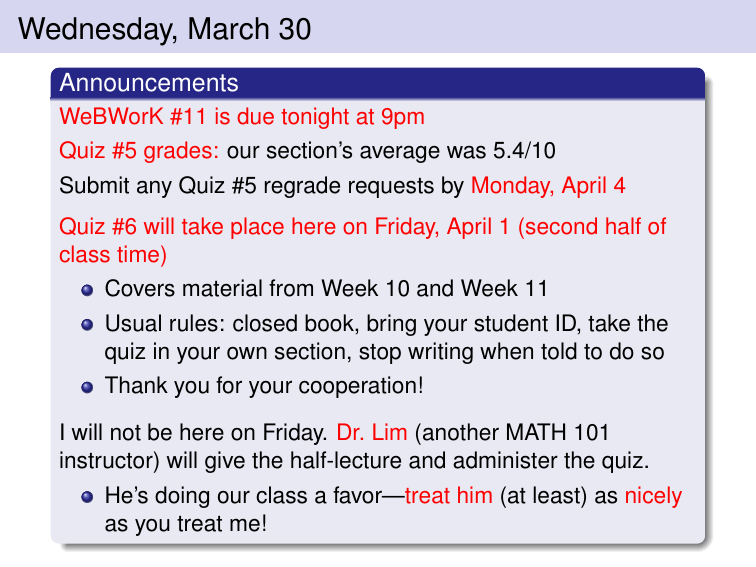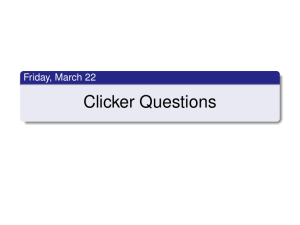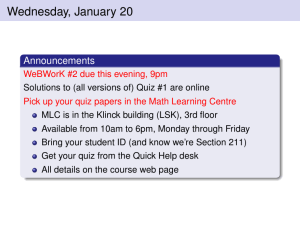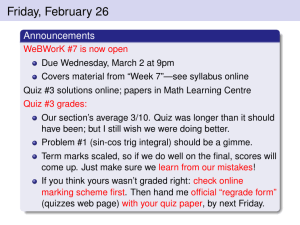Wednesday, March 30 Announcements
advertisement

Wednesday, March 30 Announcements WeBWorK #11 is due tonight at 9pm Quiz #5 grades: our section’s average was 5.4/10 Submit any Quiz #5 regrade requests by Monday, April 4 Quiz #6 will take place here on Friday, April 1 (second half of class time) Covers material from Week 10 and Week 11 Usual rules: closed book, bring your student ID, take the quiz in your own section, stop writing when told to do so Thank you for your cooperation! I will not be here on Friday. Dr. Lim (another MATH 101 instructor) will give the half-lecture and administer the quiz. He’s doing our class a favor—treat him (at least) as nicely as you treat me! Wednesday, March 30 Clicker Questions Clicker Question 3 New power series from old Find a power series representation, centred at 0, for the function log(1 − x). x2 x3 x4 x5 − − − −··· 2 3 4 5 3 4 2 x x x5 x + − + − ··· B. x − 2 3 4 5 C. x + 2x2 + 3x3 + 4x4 + 5x5 + · · · A. −x − D. x − 2x2 + 3x3 − 4x4 + 5x5 − · · · E. none of the above Integrating a power series ∞ X 1 = xn 1−x n=0 Z 1 dx − log |1 − x| = 1−x ∞ X xn+1 =C+ . n+1 n=0 Plug in x = 0 on both sides to get C = 0. Clicker Question 2 Related series P n Suppose that the series ∞ n=3 cn (−6) converges. What can we say about the radius of convergence, R, of the power series ∞ X cn n(n − 1)xn−2 centred at 0? n=3 A. R = 6 Double derivative B. R ≤ 6 P n Let f (x) = ∞ n=3 cn x ; since the series converges at x = −6, its radius of convergence 6. But P∞ is atnleast P 00 00 n−2 f (x) = n=3 cn (x ) = ∞ n=3 cn n(n − 1)x has the same radius of convergence as the series for f (x) itself; so R ≥ 6. C. R ≥ 6 D. |R| = 6 E. none of the above





